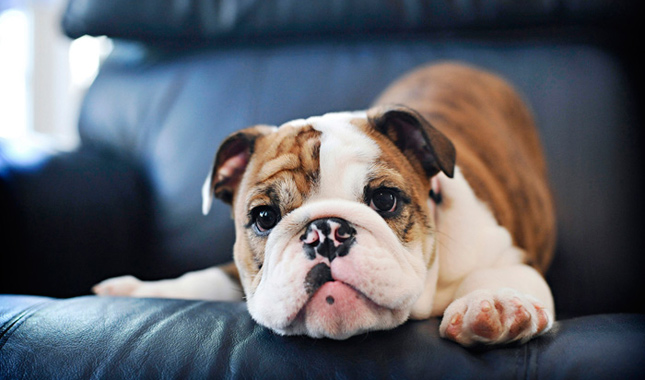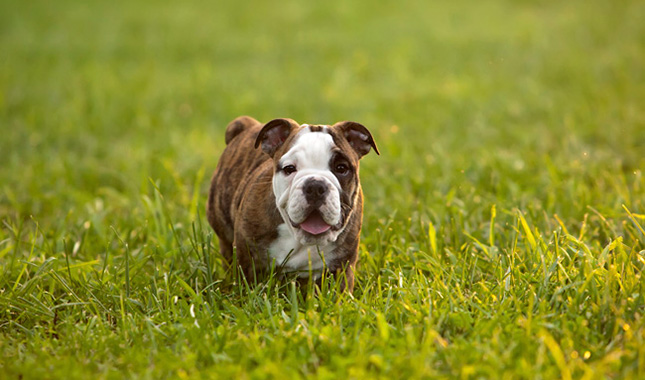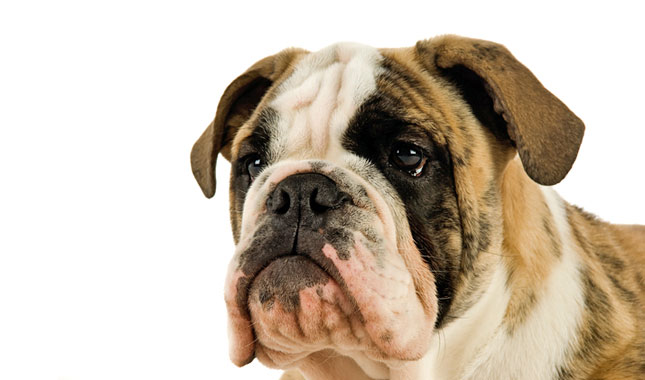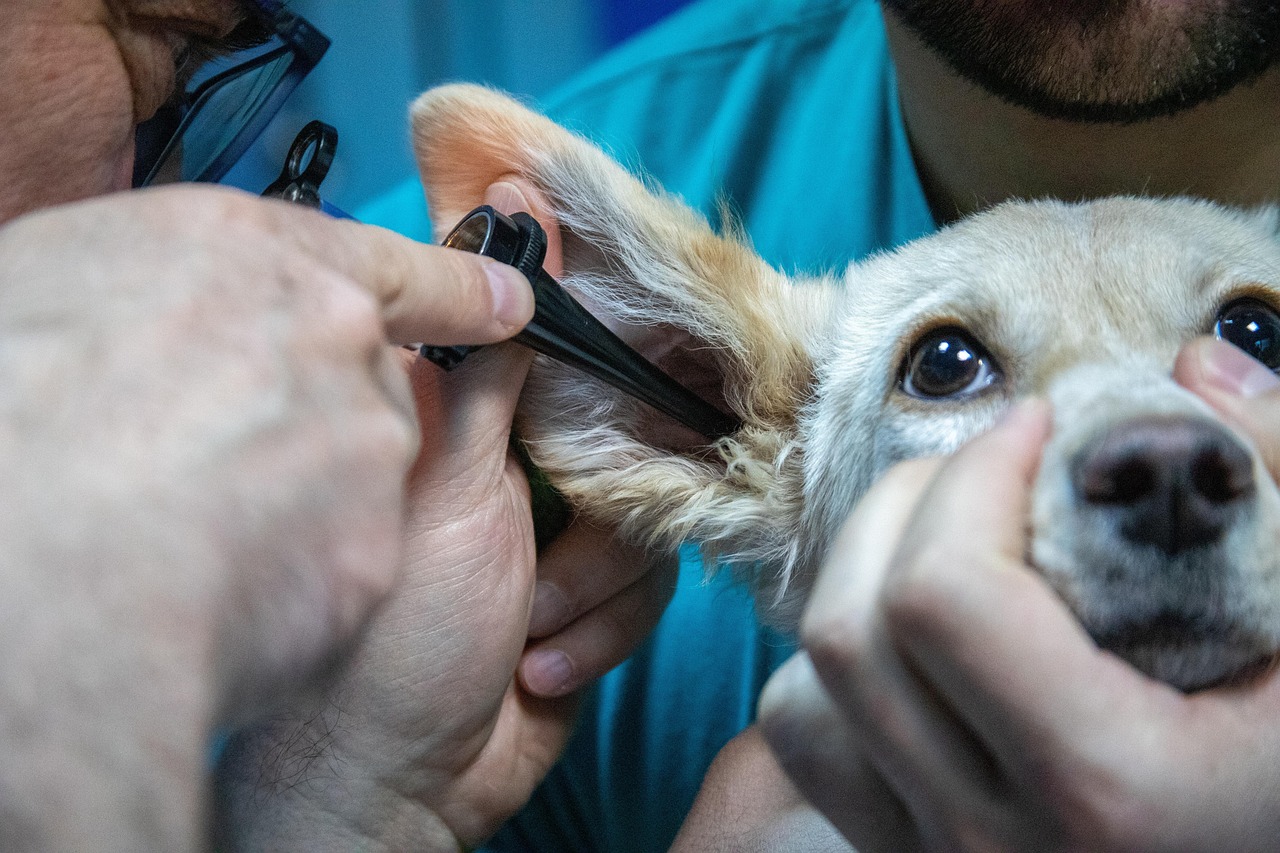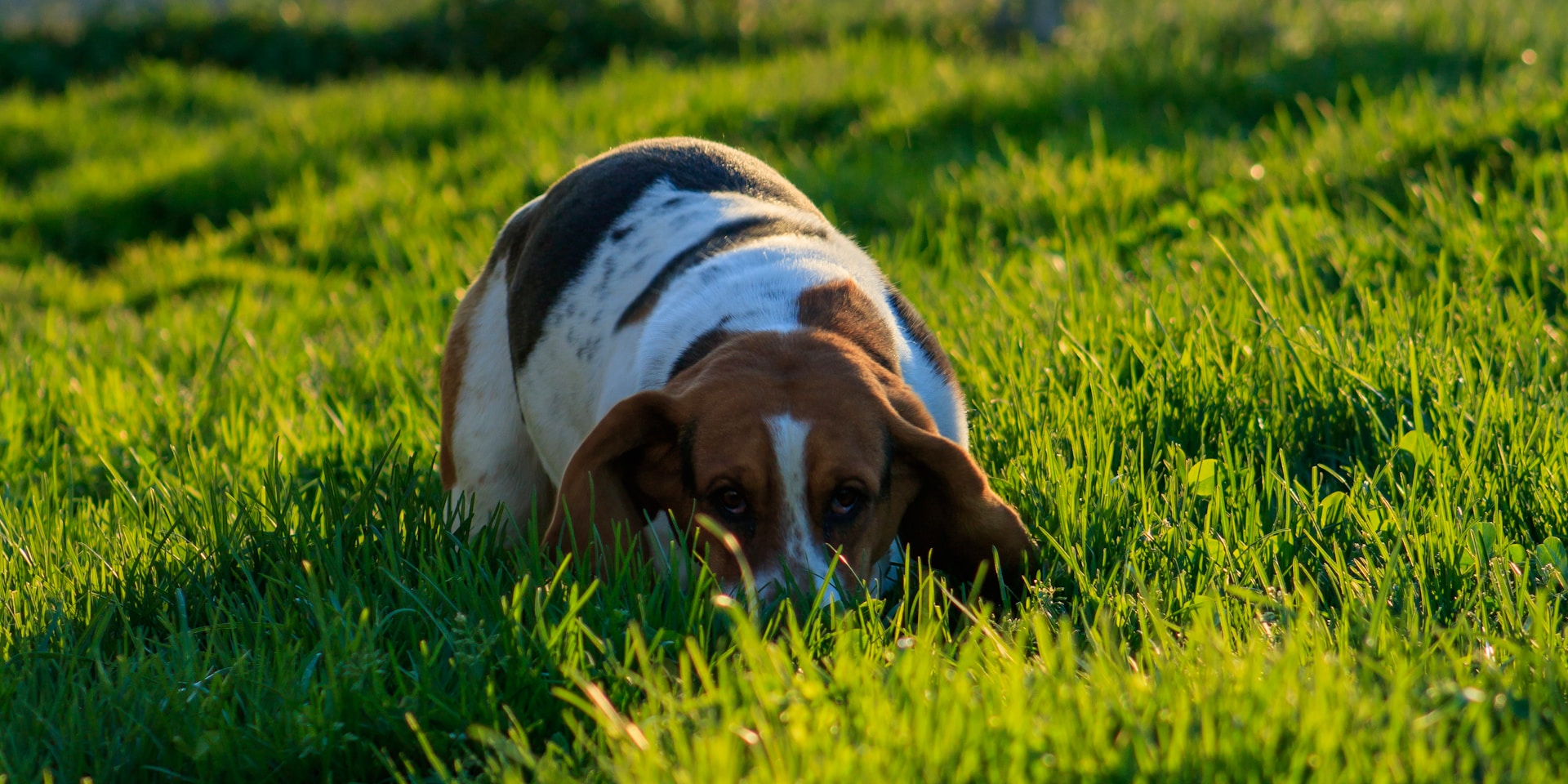Bulldog
Published on June 23, 2011
Breed Details
- Height: not specified by breed standard
- Weight: 40 to 50 pounds
Breed Characteristics
Adaptability
Trainability
Grooming
Apartament Friendly
Child Friendly
Shedding Level
Dog Friendly
Exercise Needs
Territorial
Barking Tendencies
Health Issues
Social Needs
Energy Level
Affectionate
Watchdog Instincts
Cat Friendly
Intelligence
Stranger Friendly
This rollicking family dog loves everyone and is suited to many types of homes because he’s so good-natured. But because of his flat face and heavy build, he is highly sensitive to heat and must always live indoors.Laughter, love and a face everyone adores ensure the enduring popularity of the Bulldog. He’s a gentle family companion today, but he was originally bred to fight bulls for sport – a past that, combined with his stalwart devotion, has made the breed the mascot of a number of colleges as well as the United States Marine Corps. No breed is more admired for the qualities of loyalty and determination that the Bulldog represents.
Few breeds are as easily recognized as the Bulldog, with his wrinkled mug, distinctive underbite and Churchillian jowls. Sometimes referred to as the English or British Bulldog, he’s a short, sturdy dog with a bow-legged gait, weighing between 40 and 60 pounds.
If all you’re talking about is personality and temperament, the Bulldog is just about perfect. He loves children and is very easy to train as a family pet. He’s an endless source of amusement, clever and very affectionate. He’s also an attention magnet everywhere he goes.
The Bulldog may be perfect in spirit, but in the flesh, he’s a different story. These dogs are intolerant of warm weather, and may die if overheated. Too much exercise or stress can make it difficult for them to breathe. Without exception, Bulldogs must live indoors, and need air conditioning in all but the mildest summer weather.
Most Bulldogs are born by C-section. Because breeding them is expensive, the puppies are, too. Love is an expensive proposition when you own a Bulldog.
In general, the Bulldog is an easy-care breed. His exercise needs are manageable for even the most dedicated couch potato, and he doesn’t tend to be a picky eater. He has a short coat that doesn’t require any fancy grooming, but he does have some special needs when it comes to skin care. Last but not least, it’s important for him to live in air-conditioned comfort, not only to prevent heatstroke but also because he loves his family and wants to be with them. He’s not a dog who can or should live outdoors.
Other Quick Facts
- The Bulldog has a distinctive walk: a loose-jointed, shuffling, sidewise roll.
- Many Bulldogs breathe in a labored fashion and it’s often difficult for their bodies to dissipate heat.
- Bulldogs can’t swim. Their massive head, solid torso and short legs limit their ability to stay above water. If you have a pool, spa or pond on your property, limit your Bulldog’s access to it.
- The Bulldog’s smooth coat can be brindle, solid white, solid red, fawn or fallow, or piebald.
The History of Bulldogs
The Bulldog has been around, in one form or another, for at least 500 years. The earliest types were tall and ferocious, necessary traits for a dog whose job it was to grab a bull by the nose to hold him in place. Bull-baiting, as this activity was known, had an actual purpose—to bring bulls in for breeding or castration, for instance—but it also became a popular form of entertainment in a time when there were no movie theaters, televisions or video games.
The Bulldog’s appearance stayed much the same through the early nineteenth century, but that began to change with the outlawing of dog fighting in England (another popular “sport”) and the rise of dog shows. People who bred Bulldogs for exhibition selected for dogs with shorter legs and bigger heads until they arrived at a dog with a heavy, thick-set, low-slung body, wide shoulders and a massive head. They also moderated the dog’s temperament, taking it from tough to kind, from aggressive to courageous but never vicious. The modern Bulldog has a pacific and dignified nature.
It was only a matter of time before the Bulldog made his way to the United States. The American Kennel Club first registered a Bulldog in 1886, and the Bulldog Club of America was formed in 1890. One of the successful show dogs of this time, Handsome Dan, was the original Yale mascot, and all of his successors have borne the same name. The University of Georgia also has a Bulldog mascot. Each one goes by the name Uga.
Bulldogs became associated with the U. S. Marine Corps during World War I, and they are now the USMC’s mascot. All Marine Bulldogs are called Chesty.
In the past decade, the Bulldog’s popularity has risen dramatically. Nineteenth in AKC rankings in 2001, in 2010 he had risen to sixth place, a testament to his sweet and fun-loving personality.
Bulldog Temperament and Personality
Bulldogs are friendly, easygoing and get along with everyone, including children and other animals. They aren’t barkers, and they love spending time with their people.
His love of people, tolerant attitude toward children, amiable temperament and solid bulk make the Bulldog a great companion for families with kids. Bulldogs also do well with people at the other end of the age spectrum. Their restful nature makes them a good fit for anyone who enjoys a relaxed lifestyle.
Mellow he may be, but the Bulldog retains a hint of the tenacity and headstrong nature that characterized his ancestors. He’s often considered difficult to train, but people who love him say that’s a misconception. The Bulldog likely won’t be a standout in the obedience ring, but when he learns something, he knows it cold. This breed learns best through fun training sessions that involve repetition and positive reinforcement—treats and praise.
The Bulldog has a moderate energy level. A 15-minute walk has him ready for a nap. He’s willing to go a couple of miles if that’s what you want to do, but he’s fine with a brief turn up and down the street, too. Remember to walk him only when it’s cool outside, never in the heat of the day.
The Bulldog is sociable and sweet, and his reputation for courage makes him an excellent watchdog. Who’s going to mess with a Marine mascot, after all?
What You Need to Know About Bulldog Health
When they aren’t bred for good health, Bulldogs can be a mess. Their hips and spines can be malformed and they are prone to knee issues and injuries. Their many wrinkles and folds, and tightly curled tails, mean lots of skin infections if they aren’t kept clean. Cherry eye, inverted eyelids, cataracts and dry eye are just a few of the eye abnormalities that can affect the Bulldog.
Brachycephalic airway syndrome is a common problem in Bulldogs. This developmental condition results in a narrowing of the upper airway, making it difficult for flat-faced dogs, such as the Bulldog, to breathe. Because there is more upper airway resistance, dogs with this syndrome can’t cool off as easily, and may overheat faster than other breeds during warm weather or exercise.
Other conditions that can potentially affect Bulldogs include allergies and skin problems, several kinds of bladder stones, difficulty giving birth and cancer. Most of these problems have no screening tests, but they are known or believed to be genetic. A DNA test for canine hyperuricosuria, a condition that can result in a certain type of bladder stones, is now available for the Bulldog.
Bulldogs are also at high risk for gastric torsion. The stomach twists on itself, cutting off the blood supply, and requires immediate emergency surgery.
Before individual Bulldogs can be included in the Canine Health Information Center (CHIC) database, the Bulldog Club of America requires them to have a patella (knee) evaluation from the Orthopedic Foundation for Animals and an OFA cardiology exam. You can search the OFA and CHIC websites yourself to see if a pup’s parents are listed.
Breeders must agree to have all test results, positive or negative, published in the CHIC database. A dog need not receive good or even passing scores on the evaluations to obtain a CHIC number, so CHIC registration alone is not proof of soundness or absence of disease, but all test results are posted on the CHIC website and can be accessed by anyone who wants to check the health of a puppy’s parents. If the breeder tells you she doesn’t need to do those tests because she’s never had problems in her lines and her dogs have been “vet checked,” then you should go find a breeder who is more rigorous about genetic testing.
Careful breeders screen their breeding dogs for genetic disease and breed only the healthiest and best-looking specimens, but sometimes Mother Nature has other ideas and a puppy develops one of these diseases despite good breeding practices. Advances in veterinary medicine mean that in most cases the dogs can still live a good life. If you’re getting a puppy, ask the breeder about the ages of the dogs in her lines and what they died of. (For more information of choosing a good breeder go to the “Find” chapter.)
Genetic issues aren’t the only health problems that face Bulldogs. Because of their flat face and heavy build, they are highly susceptible to heatstroke and can die in the space of half an hour or less if left outside on a hot day. If your Bulldog goes with you to a picnic, baseball game or some other outdoor summer event, take steps to keep him cool and provide him with plenty of water to drink.
Compared to his earliest ancestors, today’s Bulldog is not athletic, but it’s not unheard of for Bulldogs to compete and title in agility, flyball, obedience, tracking and rally. There are Bulldogs who skateboard and even surf! If you choose a Bulldog puppy from a conscientious breeder, you can have a healthy dog who is fully capable of participating in fun activities. Though be sure to check with your vet if you want to pursue anything extremely physical with your pet as Bulldog’s aren’t exactly built for speed.
Remember that after you’ve taken a new puppy into your home, you have the power to protect him from one of the most common health problems: obesity. Keeping a Bulldog at an appropriate weight is one of the easiest ways to improve his health and extend his life. Make the most of your preventive abilities to help ensure a healthier dog for life.
The Basics of Bulldog Grooming
The Bulldog’s coat is easy to groom, but his wrinkles need some special care. Here’s what you need to know.
Brush the Bulldog’s short coat three times a week with a rubber curry or a soft bristle brush to keep it shiny and healthy. If you keep him well brushed, he shouldn’t need frequent baths. Bulldogs don’t normally shed heavily, but during spring and fall you may see a little more hair coming off when you brush. Step up the brushing until the shedding period ends.
Caring for the facial and nose wrinkles requires a bit more effort. Depending on the individual dog, wrinkles may need to be cleaned a couple of times a week or every day. Wipe out the crud from the wrinkles with a soft, damp cloth or a baby wipe, then dry them thoroughly. If moisture is left behind, wrinkles become the perfect petri dish for bacterial growth. Do the same for the indentation at the tail set and the outer vulval area. If you have any questions about dealing with skin problems or wrinkle issues, talk with your veterinarian who may prescribe a specific care regime.
Finding a Bulldog
Whether you want to go with a breeder or get your dog from a shelter or rescue, here are some things to keep in mind.
Choosing a Bulldog Breeder
Finding a good breeder is the key to finding the right purebred puppy. A good breeder will match you with the right puppy, and will without question have done all the health certifications necessary to screen out health problems as much as is possible. He or she is more interested in placing pups in the right homes than in making big bucks.
Good breeders will welcome your questions about temperament, health clearances and what the dogs are like to live with and come right back at you with questions of their own about what you’re looking for in a dog and what kind of life you can provide for him. (Go to the section on Bulldog health to learn more about the tests and precautions responsible breeders should take to help prevent certain health issues.)
While the Bulldog Club of America is a smart place to start your search for a responsible breeder, the traits that make a Bulldog a show ring success are the very ones that lead to many of the health problems common in the breed. Look for a breeder who abides by the club’s Code of Ethics and seek out one whose dogs are active in agility, obedience and other sports that require athleticism and good health, and not just ribbons from the show ring.
Avoid breeders who only seem interested in how quickly they can unload a puppy on you and whether your credit card will go through. You should also bear in mind that buying a puppy from websites that offer to ship your dog to you immediately can be a risky venture, as it leaves you no recourse if what you get isn’t exactly what you expected. Put at least as much effort into researching your puppy as you would into choosing a new car or expensive appliance. It will save you money in the long run.
The Bulldog’s popularity means he’s often found in puppy mills and in the hands of people more interested in the thousands of dollars a Bulldog puppy commands than the well-being of the dogs themselves. The lucrative trade in Bulldogs has even interested international crime syndicates, and some puppies advertised as “locally bred” may have in fact been imported from overseas puppy mills.
Whether you’re planning to get your new best friend from a breeder, a pet store, or another source, don’t forget that old adage “let the buyer beware”. Disreputable breeders and facilities that deal with puppy mills can be hard to distinguish from reliable operations. There’s no 100% guaranteed way to make sure you’ll never purchase a sick puppy, but researching the breed (so you know what to expect), checking out the facility (to identify unhealthy conditions or sick animals), and asking the right questions can reduce the chances of heading into a disastrous situation. And don’t forget to ask your veterinarian, who can often refer you to a reputable breeder, breed rescue organization, or other reliable source for healthy puppies.
The cost of a Bulldog puppy varies depending on his place of origin, whether he is male or female, what titles his parents have, and whether he is best suited for the show ring or a pet home. The puppy you buy should have been raised in a clean home environment, from parents with health clearances and show or working titles to prove that they are good specimens of the breed. Puppies should be temperament tested, vetted, dewormed, and socialized to give them a healthy, confident start in life.
And before you decide to buy a puppy, consider whether an adult Bulldog might better suit your needs and lifestyle. Puppies are loads of fun, but they require a lot of time and effort before they grow up to become the dog of your dreams. An adult Bulldog may already have some training and will probably be less active, destructive and demanding than a puppy. With an adult, you know more about what you’re getting in terms of personality and health and you can find adults through breeders or shelters. If you are interested in acquiring an older dog through breeders, ask them about purchasing a retired show dog or if they know of an adult dog who needs a new home. If you want to adopt a dog, read the advice below on how to do that.
Adopting a Dog from a Bulldog Rescue or Shelter
There are many great options available if you want to adopt a dog from an animal shelter or breed rescue organization. Here is how to get started.
1. Use the Web
Sites like Petfinder.com and Adopt-a-Pet.com can have you searching for a Bulldog in your area in no time flat. The site allows you to be very specific in your requests (housetraining status, for example) or very general (all the Bulldogs available on Petfinder across the country). AnimalShelter.org can help you find animal rescue groups in your area. Also some local newspapers have “pets looking for homes” sections you can review.
Social media is another great way to find a dog. Post on your Facebook page that you are looking for a specific breed so that your entire community can be your eyes and ears.
2. Reach Out to Local Experts
Start talking with all the pet pros in your area about your desire for a Bulldog. That includes vets, dog walkers, and groomers. When someone has to make the tough decision to give up a dog, that person will often ask her own trusted network for recommendations.
3. Talk to Breed Rescue
Networking can help you find a dog that may be the perfect companion for your family. Most people who love Bulldogs love all Bulldogs. That’s why breed clubs have rescue organizations devoted to taking care of homeless dogs. The Bulldog Club of America’s Rescue Network can help you find a dog that may be the perfect companion for your family. You can also search online for other Bulldog rescues in your area.
The great thing about breed rescue groups is that they tend to be very upfront about any health conditions the dogs may have and are a valuable resource for advice. They also often offer fostering opportunities so, with training, you could bring a Bulldog home with you to see what the experience is like.
4. Key Questions to Ask
You now know the things to discuss with a breeder, but there are also questions you should discuss with shelter or rescue group staff or volunteers before you bring home a pup. These include:
What is his energy level?
How is he around other animals?
How does he respond to shelter workers, visitors and children?
What is his personality like?
What is his age?
Is he housetrained?
Has he ever bitten or hurt anyone that they know of?
Are there any known health issues?
Wherever you acquire your Bulldog, make sure you have a good contract with the seller, shelter or rescue group that spells out responsibilities on both sides. Petfinder offers an Adopters Bill of Rights that helps you understand what you can consider normal and appropriate when you get a dog from a shelter. In states with “puppy lemon laws,” be sure you and the person you get the dog from both understand your rights and recourses.
Puppy or adult, take your Bulldog to your veterinarian soon after adoption. Your veterinarian will be able to spot problems, and will work with you to set up a preventive regimen that will help you avoid many health issues.

